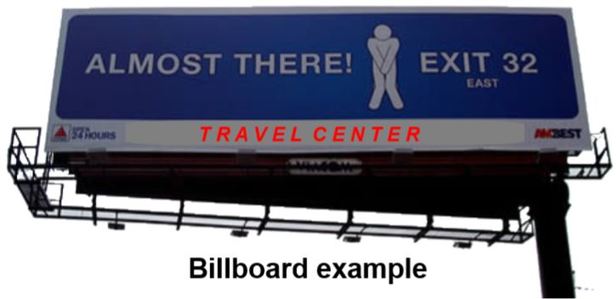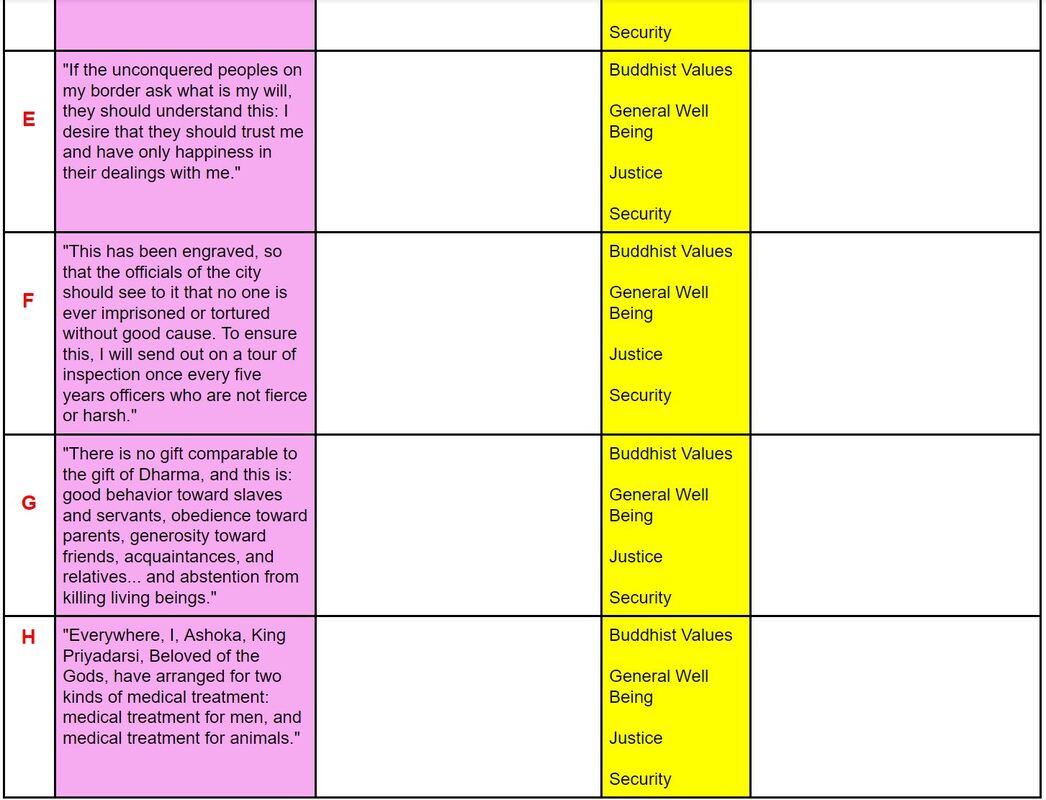India Mauryan Empire Activity
Ashoka's Edifying Edicts
Background: An edict is an official order or decree issued by someone in authority. In the third century BCE, Ashoka, ruler of the Mauryan Empire had his edicts carved on cave walls, on stone, and on towering pillars across India. Often, they combined words, along with Buddhist symbols, and animals, such as the elephant and the lions shown in the pictures below. His edicts urged his citizens to unite by practicing Buddhist values and treating one another respectfully. Ashoka's edicts were posted along important roads and at important locations. At over 2000 years old, they remain an impressive sight today.
How Did Ashoka's Edicts Help Unify India?
Directions: 1. In the chart below, carefully examine the excerpt from one of Ashoka's edicts. 2. In the interpretation section explain how you think that excerpt helped Ashoka unite India. 3. Circle the category in which the edict excerpt best fits. 4. Using complete sentences, record why you think the edict belongs in the category you chose. You may work on this activity with a partner.
Ashoka's Edict Categories Explained
Buddhist Values: Edicts in this category are concerned with the Buddha's teachings about how to live a correct life.
General Well Being: Edicts in this category are concerned with making sure people have good health, shelter, clean water, and enough food.
Justice: Edicts in this category are concerned with fair laws and treatment in court and jail.
Security: Edicts in this category are concerned with the protection of people from foreign enemies.
Directions: 1. In the chart below, carefully examine the excerpt from one of Ashoka's edicts. 2. In the interpretation section explain how you think that excerpt helped Ashoka unite India. 3. Circle the category in which the edict excerpt best fits. 4. Using complete sentences, record why you think the edict belongs in the category you chose. You may work on this activity with a partner.
Ashoka's Edict Categories Explained
Buddhist Values: Edicts in this category are concerned with the Buddha's teachings about how to live a correct life.
General Well Being: Edicts in this category are concerned with making sure people have good health, shelter, clean water, and enough food.
Justice: Edicts in this category are concerned with fair laws and treatment in court and jail.
Security: Edicts in this category are concerned with the protection of people from foreign enemies.
Interpreting Ashoka’s Edicts
A Sign of the Times
The job of highway billboards is to communicate information. From billboards we can learn about new products, services, shopping areas, public service announcements, etc.
Reading billboards posted around a community tells us about that community. Similarly, Ashoka's edicts tell us about India during the Mauryan Empire.
Step 1. Read the excerpts of Ashoka's edicts below.
Step 2. Choose one of the edicts to create a billboard with a visual representation and a one-sentence interpretation of the edict you chose.
Step 3. Read the "Directions for Creating a Billboard" before beginning your work.
You may work with a partner for this activity.
Reading billboards posted around a community tells us about that community. Similarly, Ashoka's edicts tell us about India during the Mauryan Empire.
Step 1. Read the excerpts of Ashoka's edicts below.
Step 2. Choose one of the edicts to create a billboard with a visual representation and a one-sentence interpretation of the edict you chose.
Step 3. Read the "Directions for Creating a Billboard" before beginning your work.
You may work with a partner for this activity.

Directions for Creating a Billboard:
1. Choose your partner wisely, someone with whom you can focus on presenting good work.
2. Before choosing which of Ashoka's edicts you will create a billboard for, carefully re-read the edicts from the "Interpreting Ashoka's Edicts" exercise above.
3. Underline or highlight key words in the edict you and your partner chose. If necessary, use a dictionary to find out the meaning of any new words.
4. Discuss what you think the edict means with your partner, then write a one sentence interpretation of your edict.
5. Brainstorm ideas for how you will visually represent the edict you and your partner chose. The class should be able to understand the key ideas from your edict by simply looking at the billboard you create.
6. On an 11" x 17" piece of paper, use care to draw your billboard. Use color and other creative touches to make your billboard visually appealing.
1. Choose your partner wisely, someone with whom you can focus on presenting good work.
2. Before choosing which of Ashoka's edicts you will create a billboard for, carefully re-read the edicts from the "Interpreting Ashoka's Edicts" exercise above.
3. Underline or highlight key words in the edict you and your partner chose. If necessary, use a dictionary to find out the meaning of any new words.
4. Discuss what you think the edict means with your partner, then write a one sentence interpretation of your edict.
5. Brainstorm ideas for how you will visually represent the edict you and your partner chose. The class should be able to understand the key ideas from your edict by simply looking at the billboard you create.
6. On an 11" x 17" piece of paper, use care to draw your billboard. Use color and other creative touches to make your billboard visually appealing.





